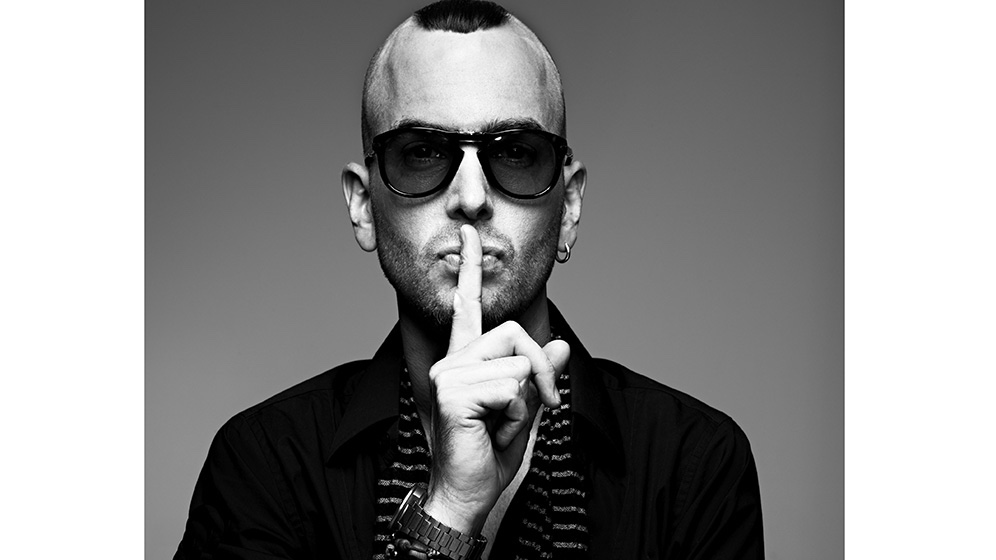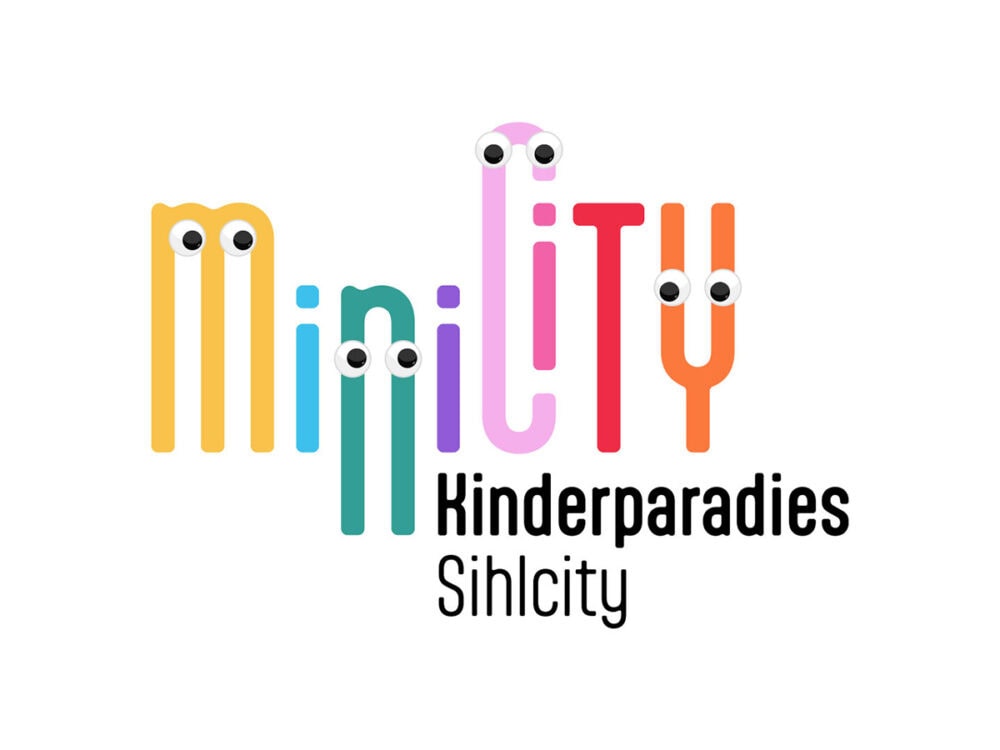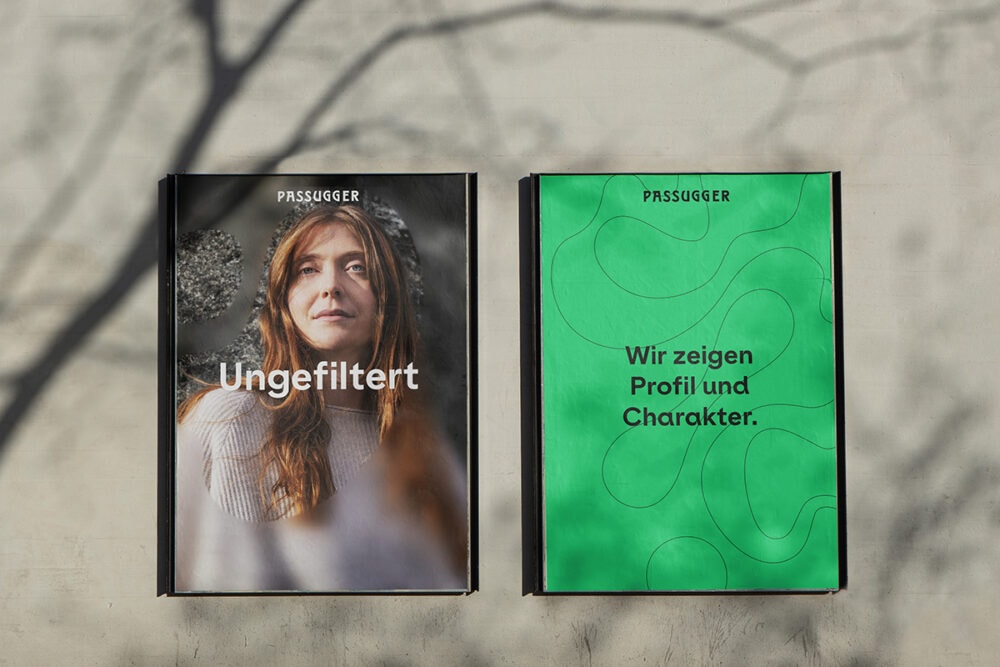Audio branding: emotion glutamate sound
Zurich-based audio branding agency Department of Noise helps brands design and maintain their auditory identity. How? Werbewoche talked about this with founder and Managing Director Ph!L!pp Schweidler.

Advertising Week: Ph!L!pp Schweidler, since when has audio branding existed?
Ph!L!pp Schweidler: The first sounds that can be described as audio branding were probably church bells, which called people to prayer and reminded them of their religion. But they also fulfilled signaling functions, such as telling the time or indicating events like holidays, weddings, or even fires. In the Middle Ages, marching drums and fanfares could be cited as precursors of audio branding; after all, they were - literally - the audio assets to "clear marching directions."
And as we know it today?
It became part of corporate communications with the invention of the radio. In 1905, the Oldsmobile Motor Company had the song "In My Merry Oldsmobile" composed, which served as the basis for their brand communication on the new, auditory touchpoint. Other companies such as Pepsi followed suit. This initial form of audio branding, which was strongly oriented toward radio, continued to evolve over the next few decades, with television added as a new multimedia channel along the way. In the 1980s, the whole claim dubbing experienced a big boom, in the style of "Haribo makes children happy and adults as well". The case of DEA in Germany is considered the first strategic audio branding with translation of the brand DNA to the auditory level. For the first time, a comprehensive sound world was created for a brand. Other companies such as D-Telekom followed suit, while the big American companies - above all the tech companies such as Microsoft and Apple - also began to use sound strategically. Germany was a great pioneer in audio branding and is still very strong today.
How has auditory branding changed since the 1980s?
Audio branding has evolved greatly in both approach and dissemination, and continues to do so today. For comparison, in 2001 there were 85000 figurative marks and 20 audio marks registered with the German Patent and Trademark Office, in 2018 there are 160000 figurative marks and about 650 audio marks. This shows a strong increase, but at the same time still a lot of potential. Whereby it must also be clearly stated that the visual appearance will naturally always remain in the first place. But the need for a consistent sound level that matches the brand is growing.
The soundtrack is the shortest path to the customer's subconscious.
Why is that?
I think this has a lot to do with visual oversaturation and the associated dulling of recipients. We are bombarded with countless brand experiences every day. It has become difficult to leave a lasting impression. Furthermore, media usage has changed dramatically: Modern people want to be entertained, want to experience new and exciting things. And at the same time, they are constantly distracted by other impressions. Since the soundtrack is more suitable than any other medium for conveying emotions and passion, it is obvious to use it specifically to bind people to a brand and to strengthen it. The buying decision ultimately takes place in the gut. However, audio is not applicable everywhere, nor is it right everywhere. For example, I can visually perceive different brands at the same time (look around), Fender, Martin, Native Instruments, Samsung - all within a split second. Auditory experiences can only be perceived one at a time, one after the other, not side by side. Also, an audio logo, for example, has a clearly defined length, it starts and ends at some point. A picture brand, on the other hand, can be looked at for as long as you feel like it.
And your personal story with audio branding, when did that start?
My passion for sound and music, but also for brands and design, developed early on and I consider myself lucky that these interests have become the cornerstones of my professional everyday life. I set my first commercials to music back in my student days, and started working on "corporate sound" and brand sound. In the last few years at Department of Noise, we've gone even deeper into audio branding and refined the design process. Increasingly, we have been approached for larger audio branding projects, and the demand seems to continue to grow. The above reasons, as well as the intrinsic desire for variety, play into our hands. And because strategic work suits me, I really like this development!
What all is involved in audio branding?
Audio logo, soundscapes, UX sounds, modular systems for multimedia applications, i.e. kits with which you can quickly add sound to content in-house, motion sound tool kits, event sounds, brand songs, signaling, POS soundtracks - every brand has different needs. What doesn't directly belong to audio branding are campaign scores, they are usually product and not brand related. What is possible, however, is to take a well-functioning campaign song to the strategic level and develop it further there. That's what happened at Migros, where the campaign soundtrack was the first thing, and then excerpts of it became the audio logo. It also works the other way around and across brands: United Airlines used a song, an old evergreen, in its communication. After some time, it was charged with the positive values of the brand. For the launch of a new car, Ford hijacked the song - the copyright period had long since expired. Ford not only used the song, but also got the entire emotional charge that United Airlines had built up over the years for free. Finally, the multiple use was even an enrichment for both companies: The values and associated brand perception of United Airlines were also triggered and strengthened by Ford's use with the customer. A few years ago, Swiss used the song "Campari Soda" by Taxi for a campaign. In my opinion, it would have been ideal for adaptation in the strategic area! It represents Swiss' values perfectly.

What function can the audio part of a branding take on?
With auditory brand experiences, we can provide aspects that can contribute to building trust and coherence, taking into account the brand's strategy and user approach. The goal is always to find a coherent, consistent language that corresponds with the other measures. Audio can complement or take on a complementary role to other assets. It helps build trust towards the brand, strengthen longer-term customer loyalty. Audio is the shortest route into the customer's subconscious. You don't have to actively look, you don't even have to be in the same room to get an auditory brand experience. Looking away is possible, listening away or feeling away is not. Sound is a fantastic amplifier of brand experiences - emotion glutamate, so to speak. Of course, the context, i.e. the right sound at the right touchpoint, is crucial.
For which companies are audio branding elements useful?
It's not worth it for the Thai snack bar on the corner; it's also best served with a mailbox flyer. All joking aside: the big players have long since worked up their auditory brand level - the multisensory orchestration of their brand is a matter of course for them. This is not least because they have something suitable and exclusive with their own audios and can also save money. Medium-sized companies are now noticeably following suit. Small companies often still shy away from the "high" initial costs, which are, however, moderate compared to other communication measures. In summary, it can be said that audio branding makes sense for every company that communicates strategically - regardless of whether it is in the B2C or B2B sector, people want to be addressed emotionally there as well.
Are there any industries where audio branding is particularly helpful for a brand?
The food sector, the entire service and tourism sector, consumer goods and especially luxury goods, because branding generally plays an enormous role there, are predestined for targeted sound experiences. And of course the automotive industry. Peugeot, for example, is very active in dealing with sound and regularly works up its auditory brand level. Audi has an internal department that only takes care of brand sound. This does not mean the product sound, i.e. the sound of the car door and engine, which is another separate department, but only the communication level. This shows how important audio is for cars. After all, there is probably no more emotional industry.
How should one imagine the audio branding process?
It is a design process in the broader sense, comparable to that of visual branding. At the beginning, there is the customer need to stand out from the competition. The customer experience and thus brand loyalty are to be strengthened, the brand values are to be communicated more sharply to the outside world, and so on. In order to transport this to the audio level, one first has to deal intensively with the brand and its touchpoints. Then, with workshops and brainstorming, a common strategy for the brand soundscape is outlined. This is the actual translation of the brand into sound. From the results, a creative brief is written, which in turn serves as the basis for the sound DNA composed from it. This is an effective piece of music that contains all the aspects that have been worked out. You can think of it as a newly marked out playing field, from which the desired elements can then be derived. A big advantage of this way of working is that there is much less discourse and feedback rounds during the creation of the actual assets. Of course, you can occasionally go beyond the edge of the playing field. After all, rules are basically there to be broken! But the sound DNA gives the client and us security and a solid basis on which to build for any touchpoints that may come later.
The customer must be enthusiastic, he should enjoy the result. Music does not have to be "right", music has to touch.
What role does the customer's taste in music play? Can it play a role at all?
Actually no, and yet also a little yes. Everyone listens to music and is therefore an expert on it, but with a personal taste. That's also the beauty of music. But we want to represent the sound of the brand and not that of the people involved. In order to achieve this, the derivation process helps, in which a clear attitude to the brand sound is developed. At the same time, taste and passion are also a welcome driver for emotionalization and sensitization to the topic and must therefore be included. In this respect, taste also has an influence on the process - if managed correctly, a thoroughly positive one. Co-creation is important in any process where there is no obvious right or wrong. The customer must be involved in the derivation. This is how he first develops an understanding of where the clout of the auditory level lies and which audio element to use, when and how. The client must be enthusiastic, he should enjoy the result. Music doesn't have to be "right", music has to touch.
Speaking of taste, what kind of music do you listen to yourself?
And can you "just enjoy" them? That is indeed sometimes difficult! Silence can also be a very beautiful sound. I like listening to authentic, honest music and being surprised - the more unpredictable the emotional roller coaster, the more inspiring and intense I find music. I have a bit of a problem with the currently prevailing uniformity of pop music, it often bores me. That's partly why my interest has shifted even more into the branding world. Specifically, I like listening to Valerie June, Amos Lee, anything by Beck (What a talent!), Bon Iver, DJ Shadow, Anderson .Paak, Trentemøller, Michel Corboz. And when I just want to let loose: any album by Ray Charles or the old reggae heroes like Burning Spear or Black Uhuru.
What should you avoid in audio branding?
I think the biggest mistake is to wait too long. We see time and time again that clients don't think about it until they need specific assets and they want them ready tomorrow. The audio branding process can actually take place at any time. But what it absolutely needs is time and resources, including on the customer side. And the willingness of everyone involved to engage in the strategic pre-construction. If you don't take the time, you often notice it already in the creative phase, when you fall into the "taste trap" - as explained above. Or it has a negative effect on the longevity. You have to deal carefully with the brand, otherwise there is a great danger of no longer sounding coherent and up-to-date a few months later. That's why the solid foundation, the jointly developed sound DNA, is so important. It also provides the necessary flexibility in implementation that is required in today's dynamic handling of assets in brand management. Also important: audio branding is not intended to serve pure entertainment, but is a strategic instrument that should be conducive to differentiating and emotionalizing a brand and conveying its attitude. This, in turn, can only happen if it is applied consistently. The best audio branding is of no use if it is only partially applied!
What else is important to consider?
Using the right sound or the right asset in the right place. For example, if I want to play on a telephone hotline, where people usually call when they have a problem, the first thing I shouldn't do is slap my audio logo around their ears and tell them how great I am. The link would be unfavorable there... Technical aspects also play a role, the frequency response, for example. To stay with the hotline: If the audio logo has a central application there, then the choice of double bass as a supporting element is not optimal. Penetration is also a natural issue. The best dessert, if eaten too often, eventually becomes boring or even repulsive. It also comes down to dosage when using audio assets. We don't want to get on the customer's nerves. Well, we do a little bit - because then the mere exposure effect helps us to increase brand awareness. And then: audio branding is a discipline of its own in the audio world. For example, if someone is a good film music composer, that doesn't mean they can make an audio branding project fly. The reverse is also true. I've seen big companies say to themselves, "Hey, I know composer XY, we'll just ask him, I'm sure he can do it for us." That might have been casual at first, but often such projects fail because of a lack of flexibility and strategic sustainability. And: Better no sound than the wrong sound! Trust in a brand is quickly destroyed. Building and maintaining it is much more challenging. Sound is a powerful and very emotional marketing tool. Used incorrectly, it can have a disturbing effect and thus damage the brand.
Penetration is also a natural theme. The best dessert, if eaten too often, eventually becomes boring or even repulsive.
When do you know that an audio branding has succeeded?
A difficult question. Whether a project really works can often only be seen in its application. The acid test is often the employees of a company, because they are critical of anything new internally. If our work is well received there, then we know that we can't be that wrong. Also - as we have just experienced - if the chairman of the board of directors wants the audio logo as a ringtone, that is a good sign! However, the true success on the outside can only be estimated after some time in daily use. And it is clear that in today's fast-changing world, the auditory level of a brand must also constantly evolve.
What does a bank sound like, for example?
Actually, we don't like this question and try to fade out this way of thinking when we approach a task. We want our work to support the authenticity of the brand and its credibility, not to cater to the market environment. But there are already industry-specific clusters of sound, which can of course be explained by overlapping brand values. In the financial world, for example, the piano is often used as a supporting instrument, conveying seriousness and trust through its warm sound. There is nothing wrong with that. The big problem is that differentiation falls by the wayside, which is where we see the greatest potential of audio branding. Especially in the banking world or in the Telkom industry, for example, where there are almost no more differences on the product level, this aspect must be treated centrally on the soundtrack.
How can you avoid one-size-fits-all?
Using obvious instruments differently is one approach. Or you can use sound to convey different brand values than on the visual level. This works very well if, for example, the value of "trust" is already strongly expressed on the visual level or in the company's history. Then it is possible to work in a complementary way on the sound level. All brand values should - as already mentioned - rather not be translated into sound, then the result is usually a "generic corporate sound" that hurts no one, but also does not take a stance on the brand. In the process, we specifically look for areas of tension between values and promises that we can juxtapose. This is how we peel out the aspects of the brand we want to work with. What do we want to say at our level? A clear attitude must be found in dealing with sound!
How will the industry develop over the next few years? What trends are you facing?
Voice assist tools are just starting to boom, that will definitely keep us busy in the next few years. They are a new touchpoint, a new audio-only channel, which should be specifically designed in terms of content and sound concept. As mentioned above, the choice of voice naturally plays a major role: aspects such as gender, age, intonation, dialect, tempo, voice pitch, as well as the effect - for example, serious, arrogant, lascivious, childlike, friendly, funny - have an influence on the perception of the brand. Generally speaking, touchpoints will continue to change as technology evolves. VR/ AR, which while slower to develop than expected, along with the increasing proliferation of headphones, is a new area for the application of the new sound standard "immersive audio", there are new opportunities opening up for auditory brand experiences. The Japanese are way ahead there! And the whole revolution that will happen through Artifical Intelligence Composing will turn the whole creation and especially composition industry upside down. Many things will become possible there quickly and cheaply. Maybe new aspects will be added that we can't even imagine yet, a new kind of aesthetics perhaps. What will remain is the effect of sound on people, that will not change. Sound will still offer the same direct access to our subconscious in 20 or more years as it does today and even 2000 years ago. It can be directly linked to emotions and provides an anchor for memories and experiences. This is exactly where audio branding comes in.
Ph!L!pp Schweidler (*1972) is founder & managing director of the Zurich-based company Department of Noise, one of the leading Swiss agencies for audio branding and music production, which he leads together with his partner and creative director Florian Goetze. His affinity for brand, sound and concept has accompanied him since his music studies at HSLU. He has successfully co-created the sound identity for Bank Cler, Swisscom "inOne", BKB, the NGO SmilingGecko, Abraxas and others. He has set dozens of campaigns to music, written songs for brands such as Sunrise, Migros and Switzerland Tourism, co-composed and produced golden albums and number 1 hits for artists such as Marc Sway and Seven. Schweidler is a member of the Audio Branding Society in Hamburg and holds mandates with the collecting societies Swissperfom and SUISA. Regular seminars and workshops for ZhdK and HSLU also give him the opportunity to share his knowledge. Ph!L!pp also spent 10 years as a live bass player for the Swiss pop act "Seven", playing for hundreds of thousands of people in Switzerland and abroad. Besides music, Ph!L!pp loves his family, loves traveling to foreign countries for a living and is on an eternal quest for the best espresso. In his free time, he likes to have Noam Chomsky explain the world to him.
Interview: Nora Dämpfle
The interview first appeared in Werbewoche 13/2018 on August 17.
Header: Karin Heer
Photo: Alexander Herzog








